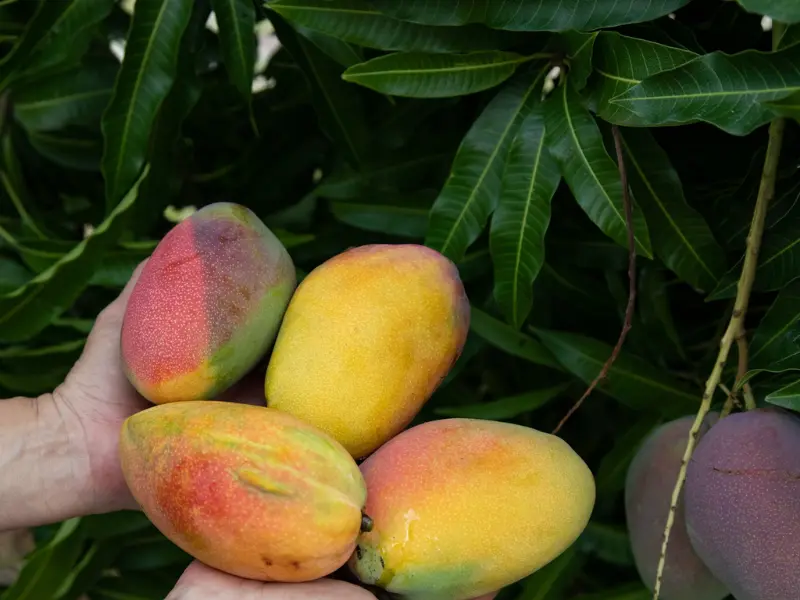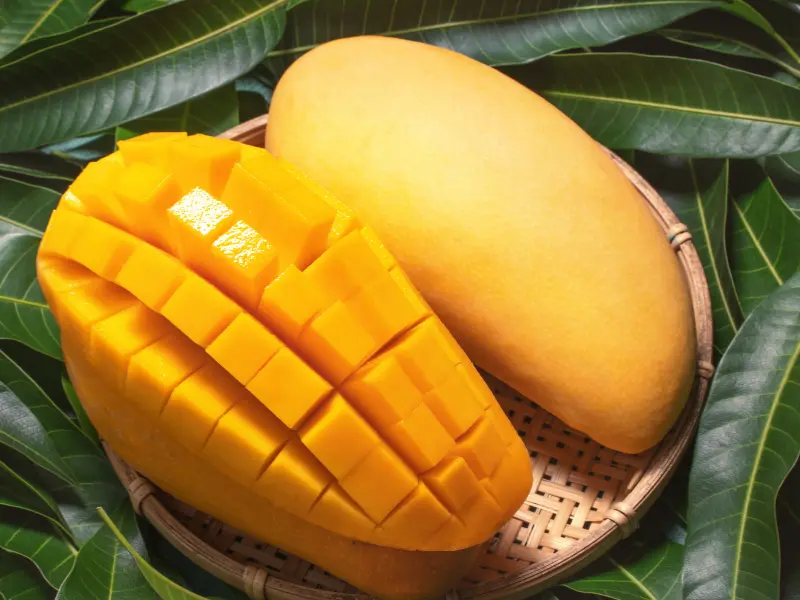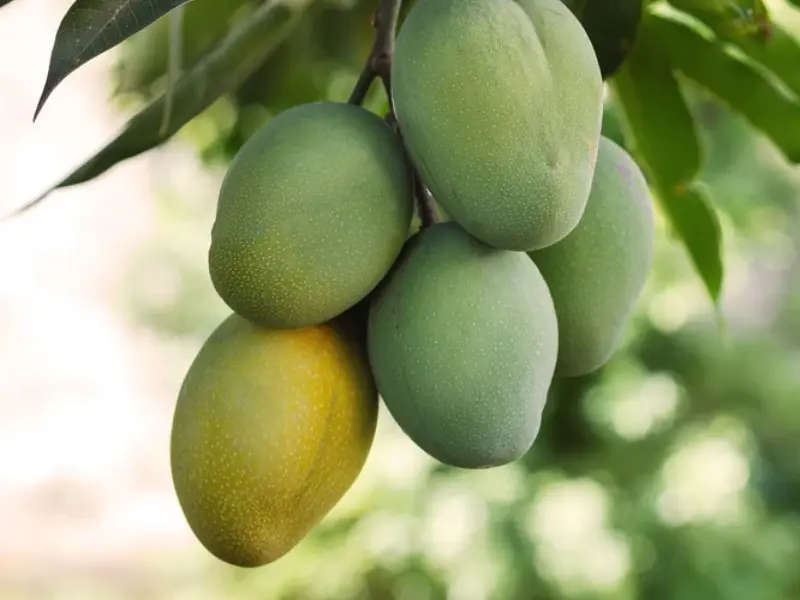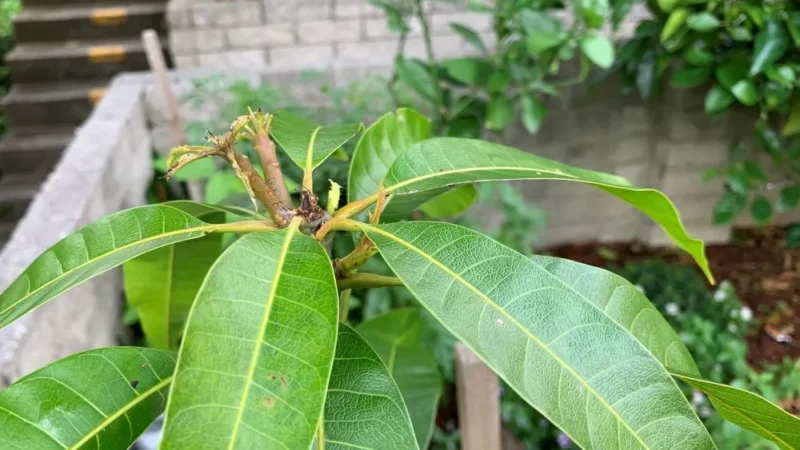Are you dreaming of growing your mango tree, but living in a cooler climate where traditional tropical fruit trees don’t thrive? You’re not alone. Many gardeners in the United States and beyond face the same challenge—how to grow mangoes in non-tropical, cooler areas. The good news is that with the right variety of mango trees and proper care, it is absolutely possible to grow mangoes in cooler climates! In this guide, we’ll walk you through the best cold-hardy mango varieties, how to grow them, and essential tips to help your mango tree thrive in cooler regions.
Best Cold Hardy Mango Tree Varieties for Northern Gardens
Mango trees are typically associated with tropical regions, but some varieties are known for their cold hardiness, making them perfect for growing in areas that experience colder winters. These varieties are well-suited for USDA hardiness zones 9-11, which cover parts of Florida, California, Texas, and other subtropical areas. However, with the right care and winter protection, even regions on the colder edge of these zones can see success.
1. Keitt Mango

The Keitt mango is one of the most popular cold hardy mango varieties and for good reason. This variety can withstand mild frost and is a favorite for gardeners in cooler climates. Known for its large, sweet, and juicy fruits, the Keitt mango ripens later in the summer, which is beneficial in cooler areas where the growing season may be shorter.
2. Cogshall Mango

Another excellent choice for colder climates is the Cogshall mango. This variety is known for its small to medium-sized fruits, which are sweet, fibrous, and ideal for eating fresh. It is a slower-growing mango tree, but its resistance to frost makes it a good option for areas with moderate winters.
3. Nam Doc Mai Mango

If you’re looking for a variety that is not only cold hardy but also offers a deliciously sweet and tropical flavor, consider the Nam Doc Mai mango. While it’s traditionally known for being grown in tropical climates, it has shown resilience in cooler zones, making it a great option for gardeners in USDA zones 9b-11.
4. Ice Cream Mango (Pineapple Mango)

The Ice Cream mango, also known as Pineapple mango, is another variety that thrives in cooler climates. This mango is named for its creamy, smooth texture and sweet taste, making it a favorite among mango enthusiasts. While it’s not as cold-tolerant as some other varieties, it can still survive light frosts with proper protection.
How to Grow Mango Trees in Cold Climates
Growing mango trees in cooler climates requires a little more effort than in tropical areas, but it’s not impossible. Here’s a step-by-step guide on how to grow mango trees successfully in temperate zones:
1. Choose the Right Variety
Start by selecting a cold hardy mango variety, such as the Keitt, Cogshall, or Nam Doc Mai, that can withstand the temperature fluctuations in your region. These varieties have been known to endure cooler temperatures better than most.
2. Pick the Right Location
Mango trees need full sun to thrive. When selecting a planting spot, choose a location that gets at least 8 hours of direct sunlight each day. Keep in mind that mango trees are sensitive to frost, so it’s essential to plant them in an area with a microclimate that protects them from cold winds or freezing temperatures. Planting near a south-facing wall or fence is ideal as it helps to capture and store heat.
3. Soil Requirements
Mango trees prefer well-drained, sandy, and slightly acidic soil. If you have heavy clay soil, mix in organic matter like compost or sand to improve drainage. Ensure that the soil pH is between 5.5 and 7.5 for optimal growth.
4. Watering and Fertilization
While mango trees are drought-tolerant once established, young trees need regular watering. Water deeply but infrequently, ensuring the soil drains well to prevent root rot. Mango trees also benefit from monthly fertilization, particularly during their active growing season. Use a balanced fertilizer with micronutrients, or a slow-release fertilizer specifically designed for mango trees.
5. Mango Tree Winter Care
In cooler climates, winter protection is crucial. Mango trees are sensitive to frost, so you may need to take extra precautions during the colder months:
-
Frost blankets: Cover your tree with frost blankets or tarps during sudden cold snaps.
-
Mulching: Apply a thick layer of mulch around the base of the tree to insulate the roots.
-
Cold frames: If your mango tree is planted in a pot, consider bringing it indoors or placing it in a cold frame during the winter months.
Read more: The Ultimate Guide to Growing and Caring for Mango Trees
Cold Protection Tips for Mango Trees

Mango trees are native to tropical regions and aren’t naturally designed to withstand cold temperatures. However, with the right techniques, you can protect your mango tree during the colder months.
1. Use Frost Blankets
Frost blankets are an easy and effective way to protect your mango tree from light frosts. Simply drape the blanket over the tree in the evening when temperatures are expected to drop and remove it in the morning. Frost blankets trap heat and protect the tree from freezing temperatures.
2. Mulching Around the Base
Mulching around the base of your mango tree helps to insulate the roots, keeping them warmer during the winter. Use organic mulch, such as wood chips or straw, and apply it generously around the root zone, making sure not to pile it against the trunk.
3. Portable Greenhouses and Cold Frames
If you live in an area with regular frost, consider placing your mango tree in a portable greenhouse or cold frame during the winter. This allows the tree to stay in a controlled environment while still receiving sunlight.
4. Watering During Winter
While you should reduce watering during winter, make sure to water your tree if temperatures rise during a winter thaw. Dry conditions combined with cold weather can cause root damage.
Common Challenges and How to Overcome Them

While growing mango trees in cooler climates is possible, it doesn’t come without its challenges. Here are some common issues and tips for overcoming them:
1. Frost Damage
The most significant challenge in growing mango trees in cold climates is frost damage. To prevent frost from damaging your mango tree, use protective methods like frost blankets, mulch, and greenhouse enclosures.
2. Pest Problems
Mango trees, like all fruit trees, are susceptible to pests such as aphids, scale insects, and mealybugs. Regularly inspect your tree for pests and treat it with organic insecticides or natural predators like ladybugs.
3. Slow Growth
Mango trees are slow-growing, especially in cooler climates. Be patient and ensure that your tree gets the proper care, including sunlight, watering, and fertilization.
Caring for Mango Trees Year-Round
Caring for mango trees in cooler climates requires attention throughout the year. Here’s a quick breakdown of seasonal care:
-
Spring and Summer: Ensure your tree gets plenty of sunlight, water regularly, and fertilize monthly.
-
Fall: Begin preparing your tree for the winter months. Apply mulch around the base and keep an eye on the weather for the first frost.
-
Winter: Use frost protection techniques like blankets and cold frames, and reduce watering.
Climate Zones Best Suited for Cold Hardy Mango Trees
Cold-hardy mango trees are most successful in USDA hardiness zones 9-11. These zones are typically found in parts of California, Florida, Texas, and parts of Arizona. However, with the right care and protection, mango trees can be grown in areas with milder winters as well.
If you’re in a zone outside of this range, consider growing your mango tree in a pot so you can move it indoors during the colder months.
Conclusion
Growing cold-hardy mango trees in cooler climates is a rewarding challenge. By selecting the right varieties, protecting your tree from frost, and providing proper care, you can enjoy homegrown mangoes even in regions that aren’t naturally suited for tropical fruit trees. Whether you’re a gardening enthusiast or a beginner, these tips will help you succeed in cultivating one of the world’s most beloved fruits right in your own backyard.
Now that you know how to get started, why not give it a try? With the right care and protection, you could be enjoying delicious, homegrown mangoes in your cooler climate in no time!
Frequently Asked Questions
1. Can mango trees grow in regions with cold winters? Yes, cold hardy mango varieties like Keitt and Cogshall can withstand cooler temperatures. Protection methods like frost blankets and mulching are essential for survival.
2. What is the best mango tree variety for colder climates? The Keitt, Cogshall, and Nam Doc Mai are all excellent choices for growing in cooler climates.
3. How do I protect my mango tree from frost? Use frost blankets, mulch around the base, and consider placing your tree in a portable greenhouse during the winter months.
4. Can I grow a mango tree indoors in a colder climate? Yes! Mango trees can be grown indoors if provided with plenty of sunlight and care. Make sure to move the tree indoors before the first frost.
